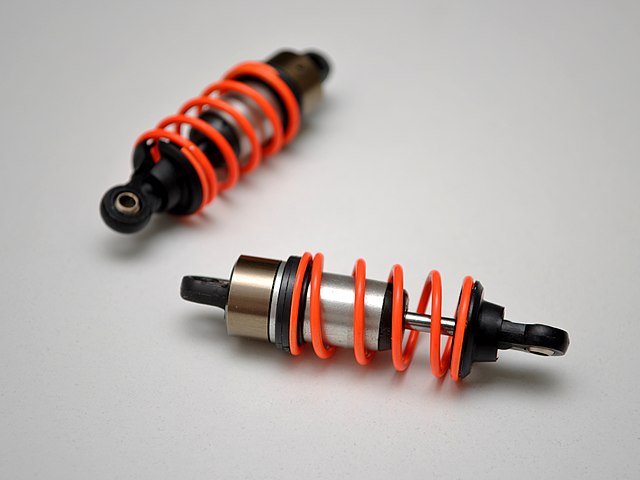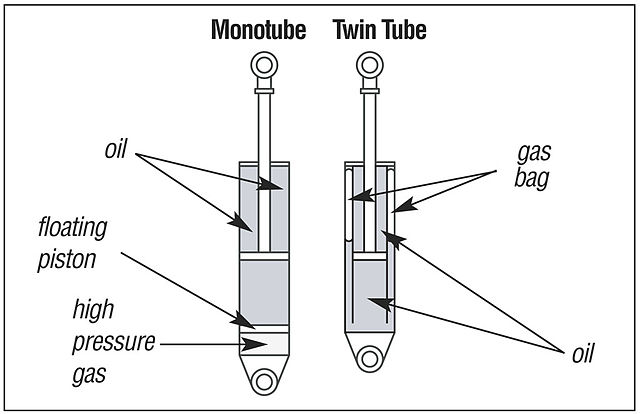A dashpot, also known as a damper, is a mechanical device that resists motion via viscous friction. The resulting force is proportional to the velocity, but acts in the opposite direction, slowing the motion and absorbing energy. It is commonly used in conjunction with a spring. The process and instrumentation diagram (P&ID) symbol for a dashpot is .
Dashpot in a Zenith-Stromberg carburetor
A shock absorber or damper is a mechanical or hydraulic device designed to absorb and damp shock impulses. It does this by converting the kinetic energy of the shock into another form of energy which is then dissipated. Most shock absorbers are a form of dashpot.
Miniature oil-filled Coilover shock components for scale cars.
Diagram of the main components of a twin-tube and mono-tube shock absorber
Absorber with remote-reservoir connected rigidly, compared to most shock absorbers. It uses a diaphragm instead of a membrane, and does not contain a control valve for expansion of the pneumatic chamber. Description: 1) Sheath and gas tank 2) Stem 3) Snap rings 4) Plate bearing spring 5) Spring 6) End cap and preload adjustment 7) Cap gas, present in versions both with or without gas valve (inverted profile) 8) Mobile diaphragm




